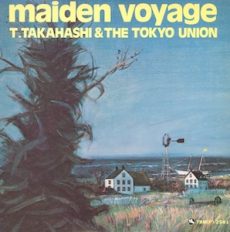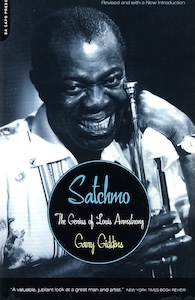
Daily Dose Of Jazz…
Herbert Anthony Charles Spanier was born in Cupar, Canada on December 25, 1928. He played guitar and harmonica at five, bugle in Regina, Canada cadet bands, and trumpet in high school. One of the first beboppers in Canada, and a figure of some legend on the Canadian jazz scene,
He played with Paul Perry and with his own band ‘Boptet’ in Regina before working in Chicago, Illinois from 1949-1950 and from 1950-1954 in Toronto, Canada. He was a sideman to Paul Bley in New York 1954-1955 and Los Angeles, California 1958-1959, and toured out of New York with the Claude Thornhill and Hal McIntyre orchestras in 1955.
He was an influential jazz musician in Montreal, Canada from 1956-1958 and between 1960-1971. Spanier taught briefly at Sir George Williams University, performed in various dance, hotel, and CBC orchestras, contributed music to NFB films. Herbie was the leader on the CBC’s ‘Jazz en Liberté’ and in various clubs. Returning to Toronto in 1971, he was a featured soloist for nine years with Nimmons ‘N’ Nine Plus Six.
For the next two and a half decades he led his own groups, won the Juno Awards, received a Special Recognition Award and recorded sessions in 1993-1994 in which he produced new works which combined with earlier recordings on compact discs.
Trumpeter, flugelhornist, pianist, and composer Herbie Spanier died in Toronto, Canada on December 13, 2001.
More Posts: bandleader,composer,flugelhorn,history,instrumental,jazz,music,piano,trumpet

Daily Dose Of Jazz…
Tatsuya Takahashi was born December 24, 1931 in Tsuruoka, Yamagata, Japan. He played on U.S. military bases in the early 1950s, and later in the decade moved to Tokyo, Japan.
He worked with Keiichiro Ebihara from 1961, but by 1966 was leading his own ensemble, Tokyo Union, which remained active until 1989. In the 1970s he played at the Monterey and Montreux Jazz Festivals.
After leaving Tokyo Union, Takahashi worked in jazz education, and in 1996 founded a new ensemble, Jazz Groovys.
Saxophonist Tatsuya Takahashi died on February 29, 2008 in Tokyo, Japan.
More Posts: bandleader,educator,history,instrumental,jazz,music,saxophone

On The Bookshelf
Satchmo: The Genius of Louis Armstrong | Gary Giddins
Gary Giddins has been called “the best jazz writer in America today” by Esquire Magazine. Louis Armstrong has been called the most influential jazz musician of the twentieth century. His magnificent career as trumpeter, singer, bandleader and actor made him a legend in his own time. His influence on jazz and popular music is impossible to overstate. Satchmo is one of the most vivid and insightful portraits ever drawn of the great man and superlative artists in the history of American music.
This edition is an authoritative introduction to Armstrong’s life and art for the curious newcomer and offers fresh insight even for the serious student of the musician. Whether he was known as Pops, Satch,Satchelmouth, Gatemouth, Dippermouth, Louie or King Menelik, this recounting of Louis’s colorful and controversial life brings the man to life.
Satchmo ~ The Genius of Louis Armstrong: 2001 | Gary Giddins
Da Capo Press

Daily Dose Of Jazz…
Edwin A. Finckel was born on December 23, 1917 in Washington, D.C. to musical parents and was the youngest of six children. Left to his own devices his artistic talents won him a scholarship at the Corcoran School of Art. Finding access to a piano within a year he had taught himself to play, albeit without the ability to read music. He took to jazz although he also showed skill as a tennis player while still a teenager.
Well regarded for his ability to improvise music he went on to arrange others and later composed over 200 of his own melodies. He appeared professionally as a teenager and he went on to introduce string instruments into his arrangement for big bands. His best known song may be Where Is The One, which was recorded by Frank Sinatra..
In the Forties he wrote songs for film, was chosen as a representative of a musical, then went into teaching in the music department at Far Brook School in New Jersey for 39 years. There he gave private lessons, conducted the choir and orchestra, and wrote much of the music that the children sing. He continued to perform jazz and in his forties he also wrote classical music.
Pianist, composer and arranger Edwin Finckel, who ran a summer camp with his wife for 17 years while performing jazz and composing classical music, died on 7 May 7, 2001 at 83 in Madison, Wisconsin.
More Posts: arranger,composer,educator,history,instrumental,jazz,music,piano

Daily Dose Of Jazz…
Carmine D’Amico was born on December 22, 1954 in Brooklyn, New York. His father gave him the choice of piano or the guitar and he chose the latter. Taught by his father who instilled in him that each note must have meaning. At age 9 he recorded Who Wears Short Shorts, which became a big hit. He was then signed to Capitol Records and went on tour , including television appearances on American Bandstand, The Allen Fried Show, and Soul Train. From age 9 – 11 during the 1950s he played on hit records by the Shirelles, Connie Francis, Fabian, Frankie Avalon, and others.
He won academic scholarships to both high school and college, graduating valedictorian from Trinity High School with a 99.9 average. Carmine found himself in pre-med but then transferred to Queens College and majored in music. Studying in between touring with Tammy Grimes, Liza Minelli and Ed Ames, he graduated with a B.A. in Music Education.
Then came military service with an assignment with an Army Dance Band. Discharged, he returned to New York and resumed his career activities, first joining Ed Ames, recording two of his biggest hits, Try To Remember and My Cup Runneth Over.” D’Amico then became staff guitarist on the Mike Douglas Show and remained for three years.
He went on to work with Bobby Darrin, Sergio Franchi, Patti Austin, Englebert Humperdinck, Vic Damone, Manhattan Transfer, Shirley Maclaine, Henry Mancini, Michele Legrande, Bernadette Peters, The Pointer Sisters, The O’Jays, Jack Jones, Lainie Kazan, Elisa Kashi, Connie Francis, Cleo Laine, Shirley Bassey and Josephine Baker.
He worked with Bernard Purdie, Steve Gadd, Ron Carter, John Faddis, Lou Marini, Lionel Hampton, Teo Macero, Bob Cranshaw, Tom Barney, John Frosk, Doc Severinsen, John Tropea, Mel Torme, Mel Lewis, and Thad Jones, among others.
Outside of jazz he recorded with Bee Gees, the Stylistics, Ray, Goodman and Brown, Stephanie Mills, Vanessa Williams, Patti LaBelle, Freda Payne, Tina Turner, Ben Vereen and played on all of the Sugar Hill Productions. During this prolific period and seemingly height of opportunities for working musicians, NARAS voted him Most Valuable Guitar Player in 1986 and 1987.
Guitarist, producer, composer, arranger and sideman Carmine D’Amico, who over the course of his career received 16 Grammys, died at the age of 67 in Casa Grande, Arizona on Oct. 2, 2011.More Posts: bandleader,composer,guitar,history,instrumental,jazz,music



